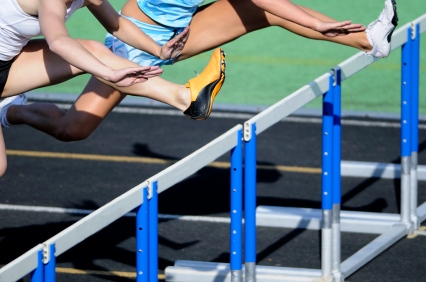Every sports training program looks to achieve two main objectives: improve performance and reduce risk of injury. Whether doing box jumps, ladder drills, or simply hitting the lat pull-down machine, there are benefits and drawbacks. One particular exercise that does not get enough attention is the single leg squat. For lower body strength, balance, and overall reduced risk of injury, regular performance of this exercise is crucial to athletic success
Three benefits
First, the lower an athlete can squat, the greater the stability there will be at the knee joint. Strong hip muscles help protect the outside of the knee while quad and groin muscles reduce twisting that could lead to knee injury.
Second, a deep squat increases the potential for power. Flexed hips provide muscles a better angle for explosive gluteal activation, contributing to faster running backs through a crowd or sprinter clearing a hurdle.

Third, a strong single leg squat is the foundation for lower body movements. Whether kicking, running, jumping, or cutting, an athlete will push off a single leg in every direction. Very few activities in sport involve both legs working at the same time, meaning most of the time fast movements are on a single leg.
Proper mechanics essential
Making sure an athlete is performing a single leg squat is critical to athletic success. Here are the rules:
- Head straight forward or slight angle upward
- Shoulders / Hips level in relationship to the ground
- Back slight arch (but not hyper extended)
- Pressure through the center of the foot (not on the toes, not on the heels)
- Bend through the hips first, knees later
- Knees should stay behind the toes
- Knees stay straight, avoiding inward rotation
- Only lower down as far as proper mechanics can be maintained
Ways to improve
The most obvious way to improve single leg squats is to include them regularly into your training regiment. Do not add any weight until the athlete can achieve a full deep squat with butt parallel to the floor with proper mechanics.
Other beneficial exercises include the following:
- Side Plank with Hip Abduction
- 2 stair step ups
- Box jump downs / landing on single leg
- Deep Lunges
- Single Leg bridging
Overall, these exercises provide a lot of "bang for your buck," significantly improving athletic potential while reducing overall risk of ankle, knee, and hip injuries. Make sure that single leg squat training is included in all your young athlete's conditioning programs.
Posted January 2, 2012








